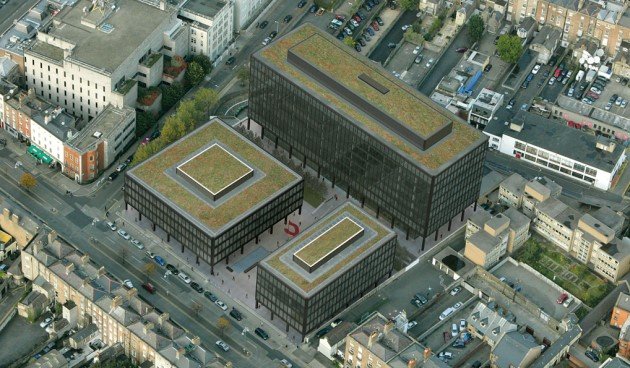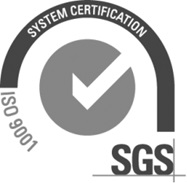Baggot Street, Dublin
Works were to be undertaken to refurbish the three office buildings comprising 50 to 54 Baggot Street, Dublin.
The use of asbestos containing materials (ACM’s) was evident throughout No. 50-54, Baggot Street. There was also evidence of indiscriminate removal of asbestos containing materials at some stage in office ceiling voids and in service risers. There were also signs of asbestos work enclosures in the basement plantrooms. There was no documentation available to support this asbestos removal works having been undertaken in a safe manner. Therefore, the buildings required a comprehensive asbestos remediation programme to be instigated and undertaken by a specialist asbestos removal contractor.

The General Extent of Works include…
- Mobilisation to complete the works.
- Risk assessing and setting up the site in a manner which prevents exposure of non site personnel to hazards associated with the works.
- The development and implementation of a site specific method for the removal of asbestos containing materials in 50-54 Baggot Street, Dublin 2
Block A,B,&C.
- Removal under controlled conditions of asbestos insulation board (AIB) panels from the spandrels in blocks A, B, & C.
- Removal under controlled conditions of all ceilings including AIB panels and asbestos containing ductwork from above existing partitions and ceiling voids in Blocks A&B.
- Removal of all ceilings including AIB firebreaks from above the exit stairways in blocks A,B.
- Removal and environmental cleaning under controlled conditions of all raised floors and voids.
- Removal under controlled conditions of all ceilings including AIB firebreaks from the electrical risers on all levels in block C.
- Removal under controlled conditions of thermal insulation and MMMF from pipework in all service risers, ceiling voids, corridors and plantrooms throughout blocks AB&C.
- Removal under controlled conditions of asbestos woven rope and adhesives from ductwork, fans, plant and associated equipment throughout Blocks AB&C i.e. carparks, vertical risers and plenums, basement and roof plantrooms etc.
- Removal of asbestos containing flange gaskets from pipework throughout the site.
- Removal of corrugated asbestos cement sheeting from the cooling tower on the roof of Block A.
- Removal of asbestos containing vinyl floor tiles and adhesive from various rooms and areas outlined in report.
- Dismantling and investigation under controlled controlled conditions of the boilers and flues in the boiler room of block A.

The works also included the transportation and disposal of the asbestos and other wastes in line with all relevant statutory provisions. This was a complex asbestos removal project that required careful planning and vast resources. The project programme set out by the client at the tender stage meant that to finish the asbestos removal works on time, works had to commence on all three blocks at the same time. At the height of the project we had deployed 25 asbestos removal operatives on-site being managed by 1 contracts manager, 1 senior supervisor and 3 supervisors who each looked after one block.
The complexity of the project was added to by the fact that the building was listed, which in turn provided problems in the removal of the Asbestos Insulation Board behind the brass spandrels. The brass spandrels could not be damaged under any circumstance but they had to be removed during the AIB removal. Our skilled finishing joiners who are trained asbestos removal operatives took great care and diligence while removing the spandrels, carefully cleaning asbestos residues off them within a controlled environment and then storing in a safe manner for reinstatement after the four-stage clearance procedure.
The asbestos residues on the rear of the spandrels proved tricky to remove as it was attached to the spandrel by means of an adhesive. Abrasive techniques could not be used to remove this residue, so operatives had to use heat guns to heat the adhesive before removing as far as reasonably practical with paint scrappers and fine wire brushes.
Once the residues were removed AFARP and inspected by the independent analyst, the rear of the spandrel was encapsulated with 2 coats of a clear water based encapsulant. Once encapsulated the spandrel panels had to be reinstated to their original position. The reinstatement had to be done in a manner so that it never looked like the spandrel panels had been removed at all. This was achieved again by the use of our skilled finishing joiners, carefully and painstakingly putting the spandrels back in place to great satisfaction of the client.
On-site we had to also meet tight deadlines set by the main contractor to ensure continuity of works from the trades following on behind the asbestos removal works. All deadlines where met ensuring the asbestos removal works was completed within schedule and within budget.



 All Case Studies
All Case Studies






